The 20 Best Vampire Movies
As a bloodsucking Transylvanian Count once sort of said, “Listen to them,...
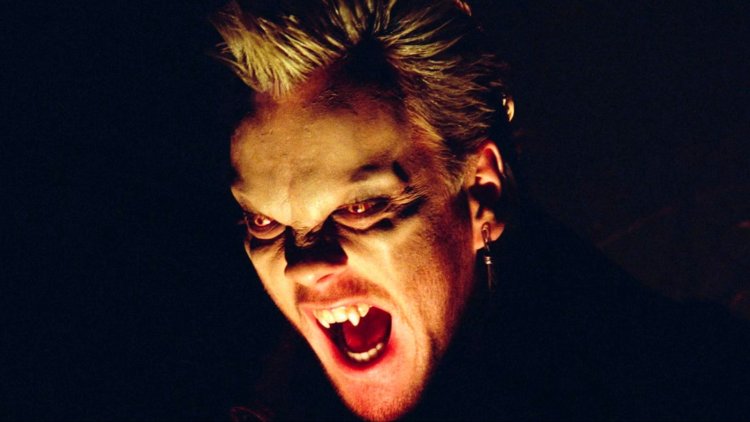
As a bloodsucking Transylvanian Count once sort of said, "Listen to them, genre filmmakers of the night. What vampire movies they make!" And they sure do make some pretty great vampire movies. Whether it's a grandiose sweeping romance made by the director of The Godfather to honour the most famous vampire book ever made, a hundred-plus-year-old work of pure German Expressionist terror, or a Kiwi comic caper that gives the undead the mockumentary treatment, time and again moviemakers have found new and ever-edifying ways to bring fresh blood to one of genre storytelling's most perennially appealing creatures of the night.
But with such a deep, presumably claret-filled pool of vampire cinema to dive into, we know just how hard it can be to bite the bullet (and/or neck) and whittle down the ever-growing watchlist to the true genre essentials. And so, with that in mind, we here at Empire have drawn our holy water, sharpened our stakes, and now at last invite you in to join us as we run down the 20 Best Vampire Movies ever made.
20. Twilight (2008)

Read the Empire review of Twilight.
Okay, okay. Hear us out. Some of you may scorn and jest at seeing the first instalment of the supernatural franchise on a list such as this – but Catherine Hardwicke’s moody, melancholy adaptation of Stephanie Meyers’ novel is the best of the sparkly-skinned bunch. We reckon that Twilight deserves to claw its way into this list because of its cultural impact alone – but there’s more to it than that. The blue-tinged aesthetic evokes rain-soaked Forks perfectly, the soundtrack is full of winners, and Kristen Stewart and Robert Pattinson’s two (admittedly occasionally awkward) lead performances were the foundation from which the actors have since built incredibly interesting, compelling filmographies. Twilight completely captures the intense longing and inherent relationship drama that makes beautiful young bloodsuckers such a ripe source of inspiration for YA stories – and, you have to admit it, that ‘Supermassive Black Hole’ baseball scene is pretty damn good.
19. A Girl Walks Home Alone At Night (2014)
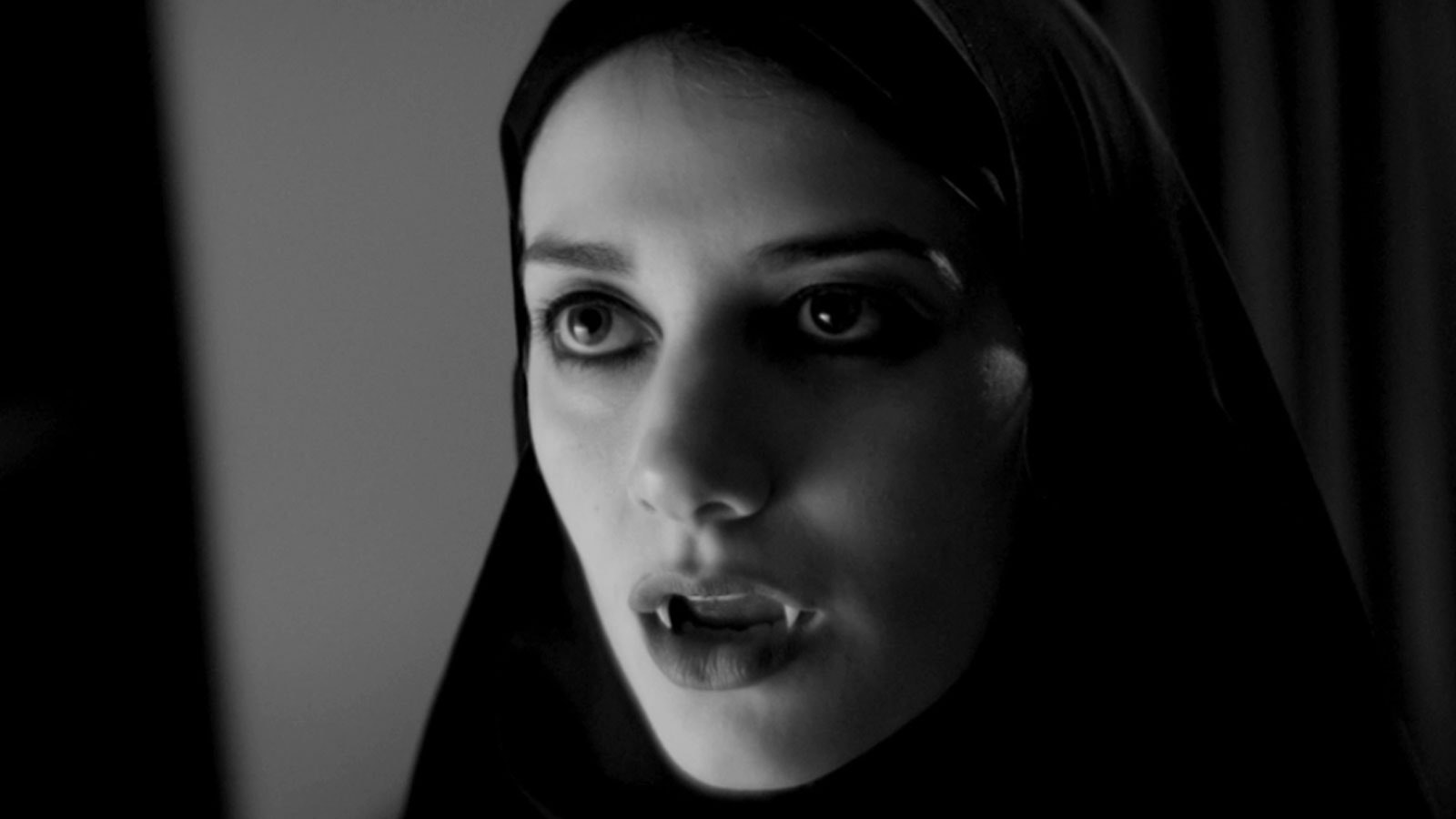
Read Empire's review of A Girl Walks Home Alone At Night.
Generally speaking, you’d have to say there aren’t that many black-and-white, Farsi-language, nouvelle vague, punk vampire Western romances, but on the evidence of A Girl Walks Home Alone At Night, there should probably be more. Iranian-American writer and director Ana Lily Amirpour expands her 2011 short of the same name, and keeps the central sly conceit of the title: we’re used to girls walking home alone at night in horror films being vulnerable, but here, that describes the threat. The Girl’s chador, often thought of as a symbol of oppression in a culture that requires women to cover themselves, here becomes one of power. It allows her to pass unnoticed while simultaneously throwing an iconic silhouette, and it hides, hilariously, a stolen skateboard: the means by which she glides eerily through the monochrome streets of the fictional Iranian "Bad City". Great soundtrack, too; you can tell that Amirpour is also a DJ. It’s a strange film, and possibly an exercise in style over substance. But it’s very, very cool.
18. Only Lovers Left Alive (2013)

Read Empire's review of Only Lovers Left Alive.
After a western (Dead Man), a couple of gangster films (Ghost Dog, The Limits of Control) and a _sort of_rom-com (Broken Flowers), Only Lovers Left Alive finally saw idiosyncratic indie legend Jim Jarmusch turn his attention to horror. Not that the film is scary, exactly – but it is about vampires, and bursts of startling violence occasionally punctuate the stoned and laconic comedy. The film takes place in two decayed cities: Detroit, where the reclusive Adam (Tom Hiddleston) makes dark music in a dismal apartment; and Tangier, where Adam’s wife of centuries Eve (Tilda Swinton), drags him for, if not some sunshine, then at least a change of air. Undeniably pretentious, it’s also a weirdly cheerful film beneath its put-on gloom. Most of its characters are suffering existential ennui, but Eve remains a source of tremendous positivity. “How can you live so long and still not get it?” she says to Adam in exasperation. “This self-obsession is a waste of living. It could be spent in surviving things, appreciating nature, nurturing kindness and friendship, and dancing!” Only Lovers is a film about death, but also about how brilliant life is.
17. Ganja & Hess (1973)
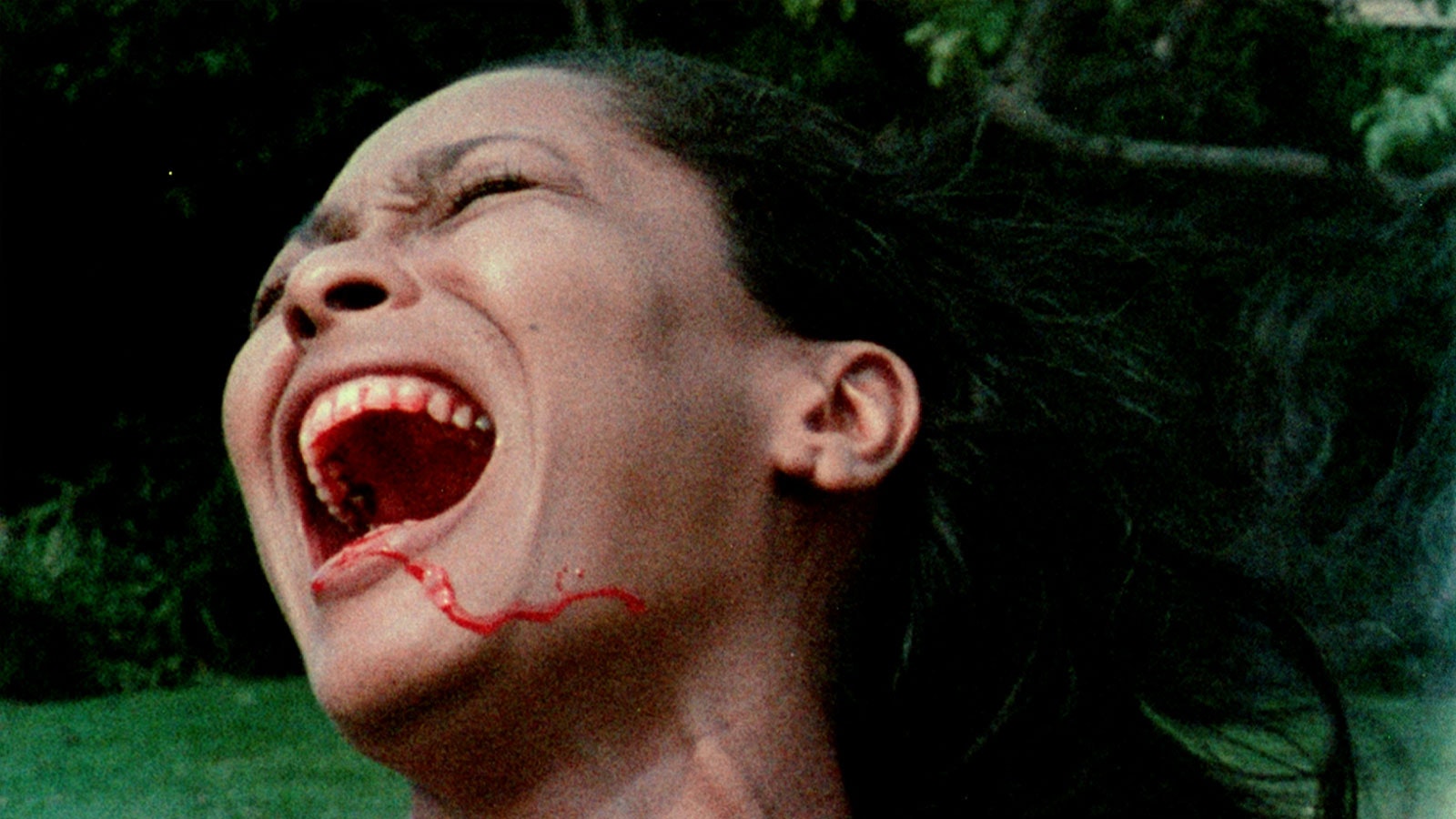
When executives gave director Bill Gunn the financing to make Ganja & Hess, they were expecting a Blaxploitation vampire flick in the Blacula mould. Instead, they got something much more meditative and often melancholic, an experimental moodpiece that reconfigures vampiric blood-hunger as an addiction. An addiction to what? There are many interpretations. Night Of The Living Dead’s Duane Jones stars as Dr. Hess Green, a well-off Black anthropologist researching Africa’s ancient Mythrian nation and its culture of drinking blood. Then, his assistant George Meda (Gunn himself) stabs him with a ceremonial dagger before taking his own life, and Hess' own bloodlust begins – complicated by Meda’s wife Ganja turning up in search of her disappeared husband. As Ganja, Marlene Clark enters the film like a whirlwind, shaking up not just Hess’ despondence but injecting fresh energy into the movie itself. A refreshingly original take on vampire tropes, Ganja & Hess is gaining renewed cult status as a vital work of 70s Black cinema – and with all its startling imagery and thematic depth, it’s a real trip.
16. Thirst (2009)
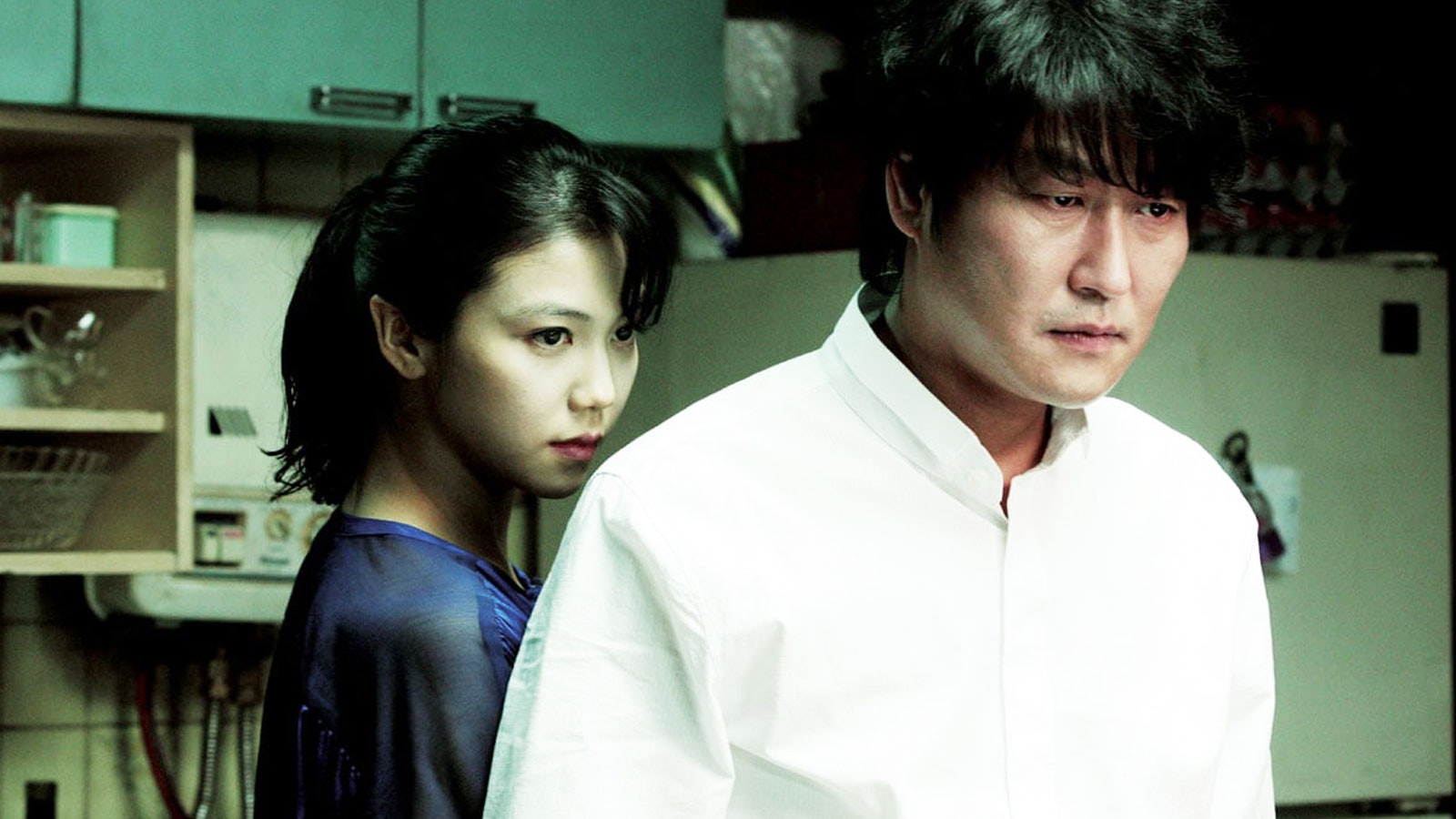
Read Empire's review of Thirst.
Thirst is an odd beast: a Korean horror film based on a 19th-Century French novel that has no supernatural elements. That novel, Emile Zola’s Therese Raquin, involves the eponymous orphan heroine being railroaded into an unhappy marriage by her overbearing aunt, Madame Raquin. Chained to the feeble Camille, Therese begins a torrid affair with the dashing Laurent, but its future is not a happy one, and there's murder afoot. In Park Chan-wook’s hands, Laurent is recently-turned vampire Sang-hyun, Therese is Tae-ju, and Camille is Kang-woo, and the already complicated plot is further twisted by Sang-hyun’s need to cope with his blood cravings, and the consequences of his vampirising others. Zola belonged to the naturalist school, so it’s safe to say he’d have been surprised by the sight of any of his characters catching fire in the sunlight. But for all its skew-whiff take on the material, Thirst hews oddly faithfully to its source. There certainly aren’t many films like it.
15. Bram Stoker’s Dracula (1992)
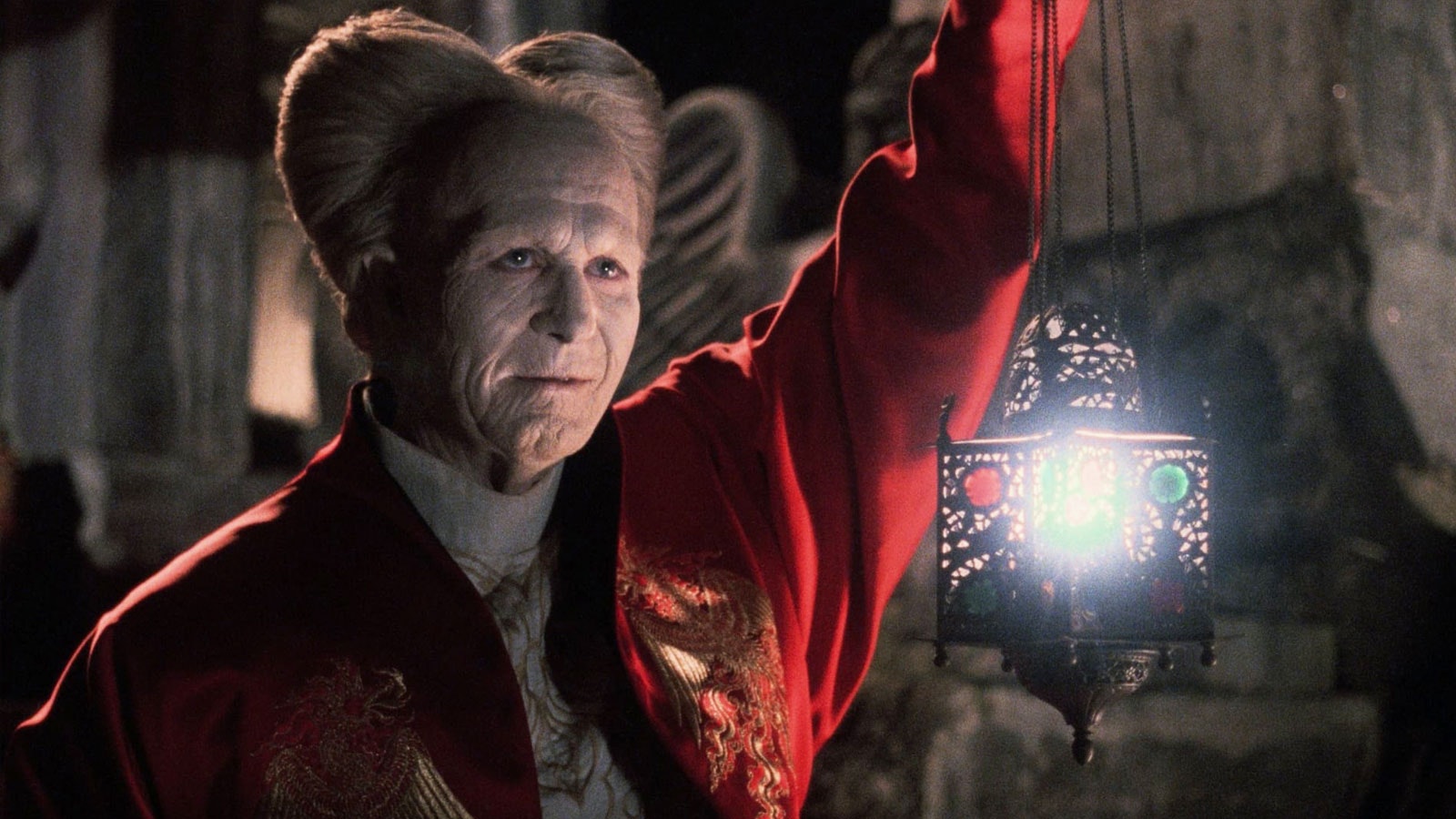
Read Empire's review of Bram Stoker's Dracula.
Bram Stoker’s unwieldy epistolary novel has never been entirely faithfully adapted for the screen. And in spite of the author’s name in its title – deep breath – Francis Ford Coppola’s Bram Stoker_’s Dracula_ takes plenty of liberties of its own. Gary Oldman isn’t really Bram Stoker’s Dracula at all, but his ripe performance of the count as, at various points, a medieval warrior, desiccated drag act and dark-glassed Lothario, is never less than outrageously entertaining. Coppola’s deliberately overblown goth-fest surrounds Oldman with a thunderous Anthony Hopkins as Van Helsing, a lascivious Sadie Frost as Lucy, a rather clipped and insipid Keanu Reeves as Jonathan Harker, and a winsome Winona Ryder as Mina. The idea of Mina as Dracula’s immortal beloved is nicked from The Mummy and doesn’t feature in Stoker’s original, and the film as a whole is thoroughly eccentric. But it’s so much more fun than Kenneth Branagh's Mary Shelley's Frankenstein and it’s still remembered with huge fondness by the 90s grunge generation who saw it first. In Whitby the poster is still so ubiquitous you’d think it’d been made last year.
14. Salem’s Lot (1979)
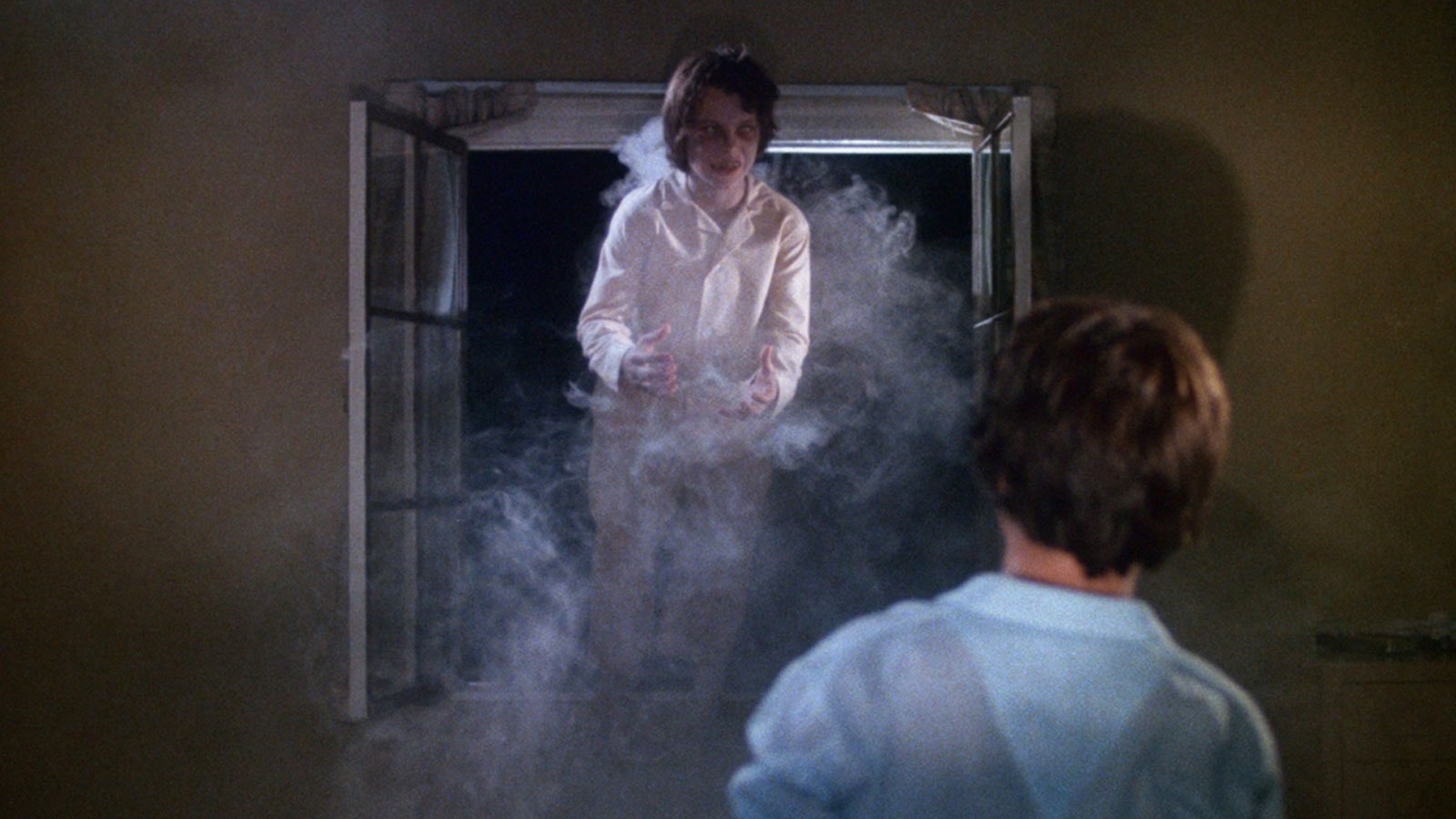
One of the earliest Stephen King adaptations, and based on one of his earliest novels, Salem_’s Lot_ is a three-hour TV mini-series, although it was trimmed down to a more manageable length for theatrical release in some countries. Tobe Hooper was the director, and there’s none of the gnarly insanity that he brought to The Texas Chain Saw Massacre on display here, circumscribed as the project would have been by the limits of what could be shown on '70s American television. But the story of the town where, by the end, practically everyone is a vampire, is still strong stuff, and Hooper nevertheless provided audiences with some unforgettable scares. People who were kids at the time still talk about the unshakeable fear of Ralphie Glick floating at the window. King’s principal vampire Mr Barlow is reduced from the book’s more talkative villain to Reggie Nalder’s bestial Nosferatu, but it works. It’s almost more disturbing that Barlow’s familiar, Straker (a late-career James Mason), is in service to this terrible thing.
13. Cronos (1993)
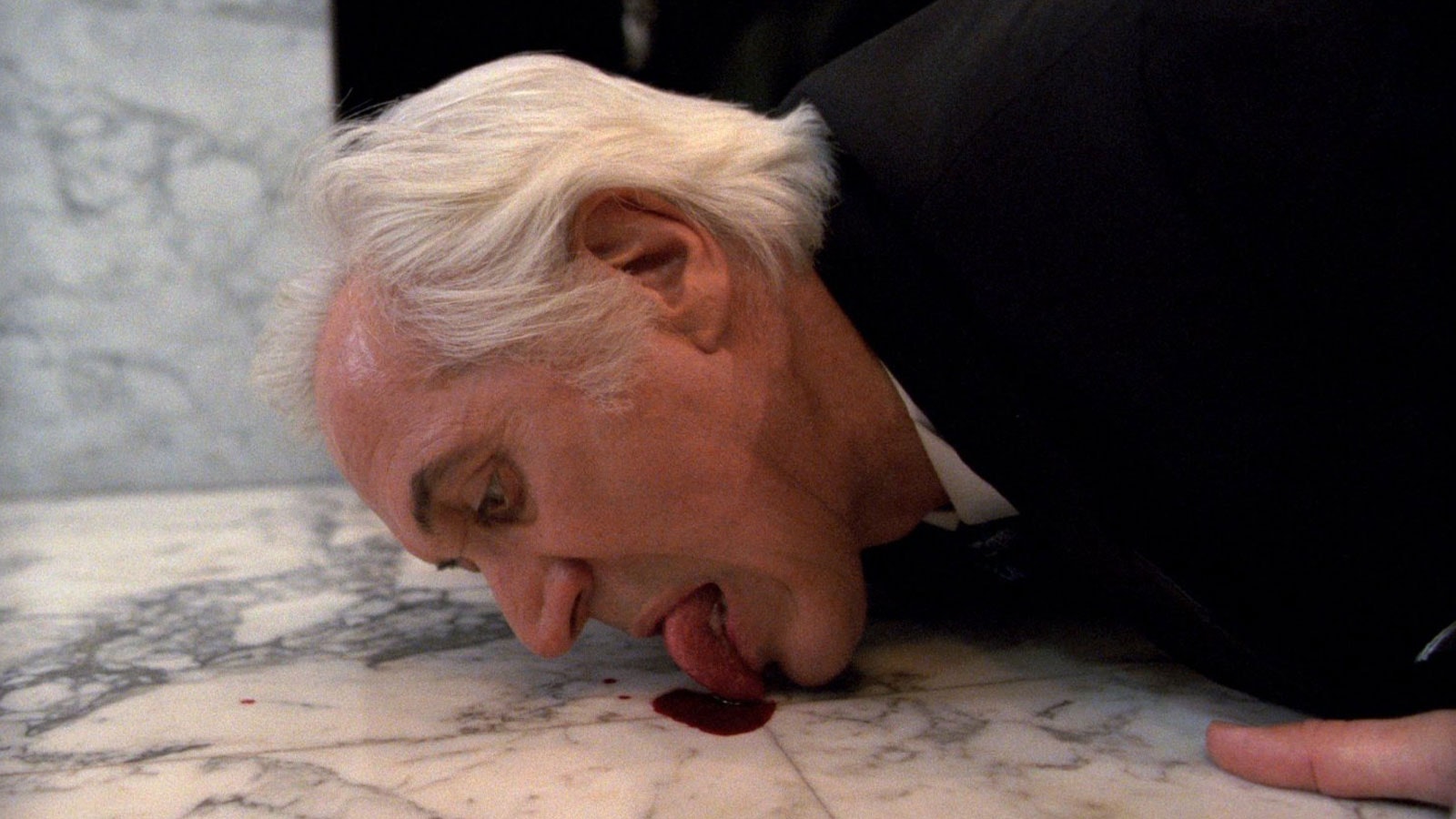
Read Empire's review of Cronos.
Guillermo del Toro’s Spanish-language debut immediately announced him as a talent to watch. The playfully morbid story revolves around Federico Luppi’s crumbling antiques dealer, who accidentally comes into possession of the mysterious Cronos device, and finds it returning his old youthful vim and vigour. But of course, there’s a price. Plot-wise, then, it’s unremarkable, but the 29-year-old del Toro here already displays his feel for character and his eye for lavish and intricate design. The budget can’t have been high, but the writer-director still manages to conjure a convincing 16th-Century prologue from his limited resources – the make-up designs and brass-and-clockwork of the Cronos itself would remain as recognisable del Toro signatures in the generally extraordinary projects that followed. A fully-formed debut, Cronos walks the line between classy and pulpy, and it’s a line that del Toro has effortlessly balanced on ever since.
12. Fright Night (1985)
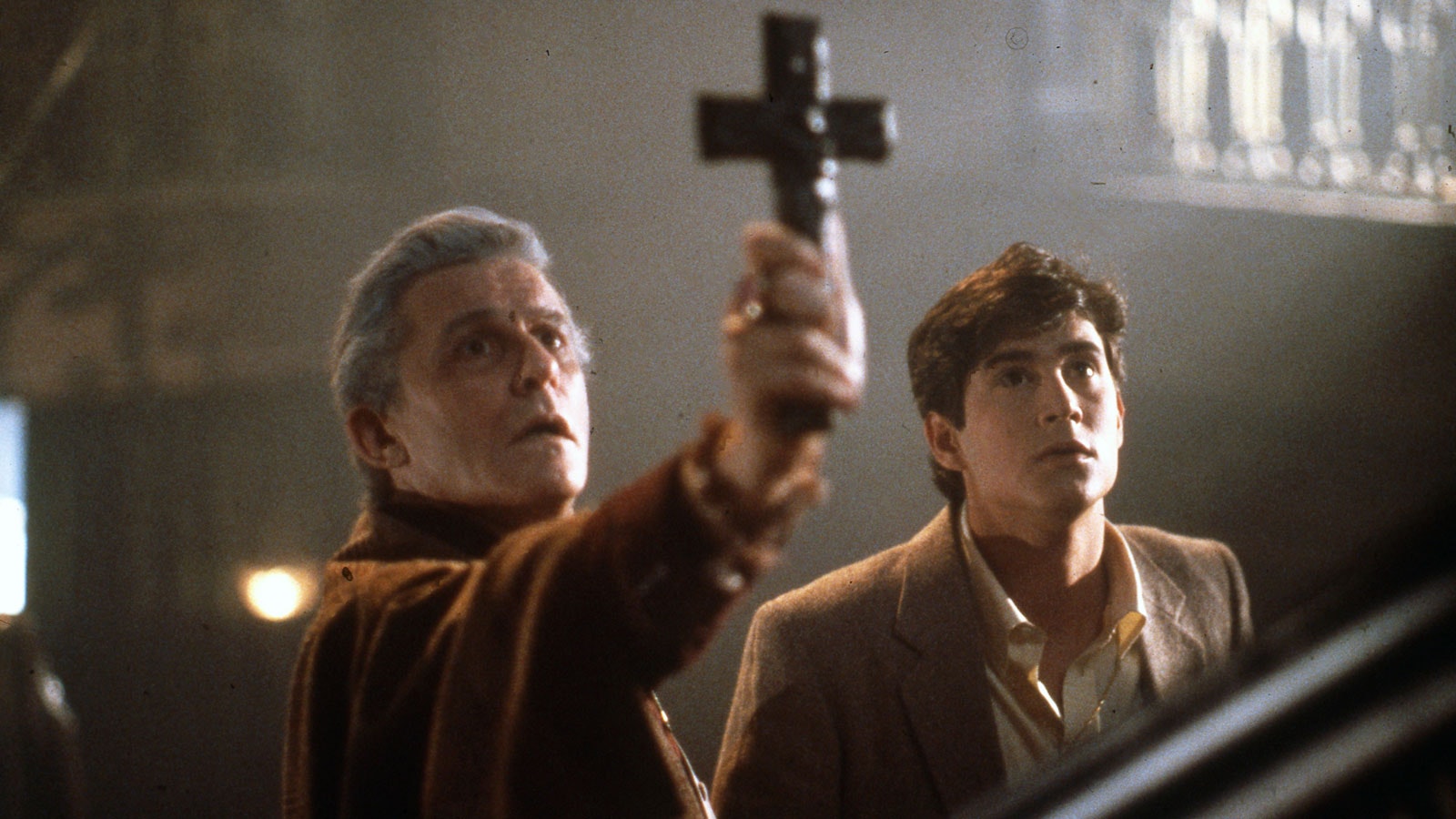
Read Empire's review of Fright Night.
Pre-empting Buffy and her imitators by more than a decade, Fright Night took the John Hughes-style teen high-school drama and threw monsters at it. The result was, and remains, kind of delightful, with the likeable William Ragsdale coming to suspect that his neighbour Chris Sarandon is among the un-living, and has designs on his girlfriend. His solution? Call his favourite late-night TV horror host, the semi-recumbent Roddy McDowall, into action. It’s dated less well than some of its contemporaries (although it’s still much better than the 2011 remake), and Stephen Geoffreys’ Evil Ed was always annoying, but Fright Night remains a heartfelt love letter to classic horror; a nostalgic favourite that’s now a classic in its own right.
11. Blade (1998)
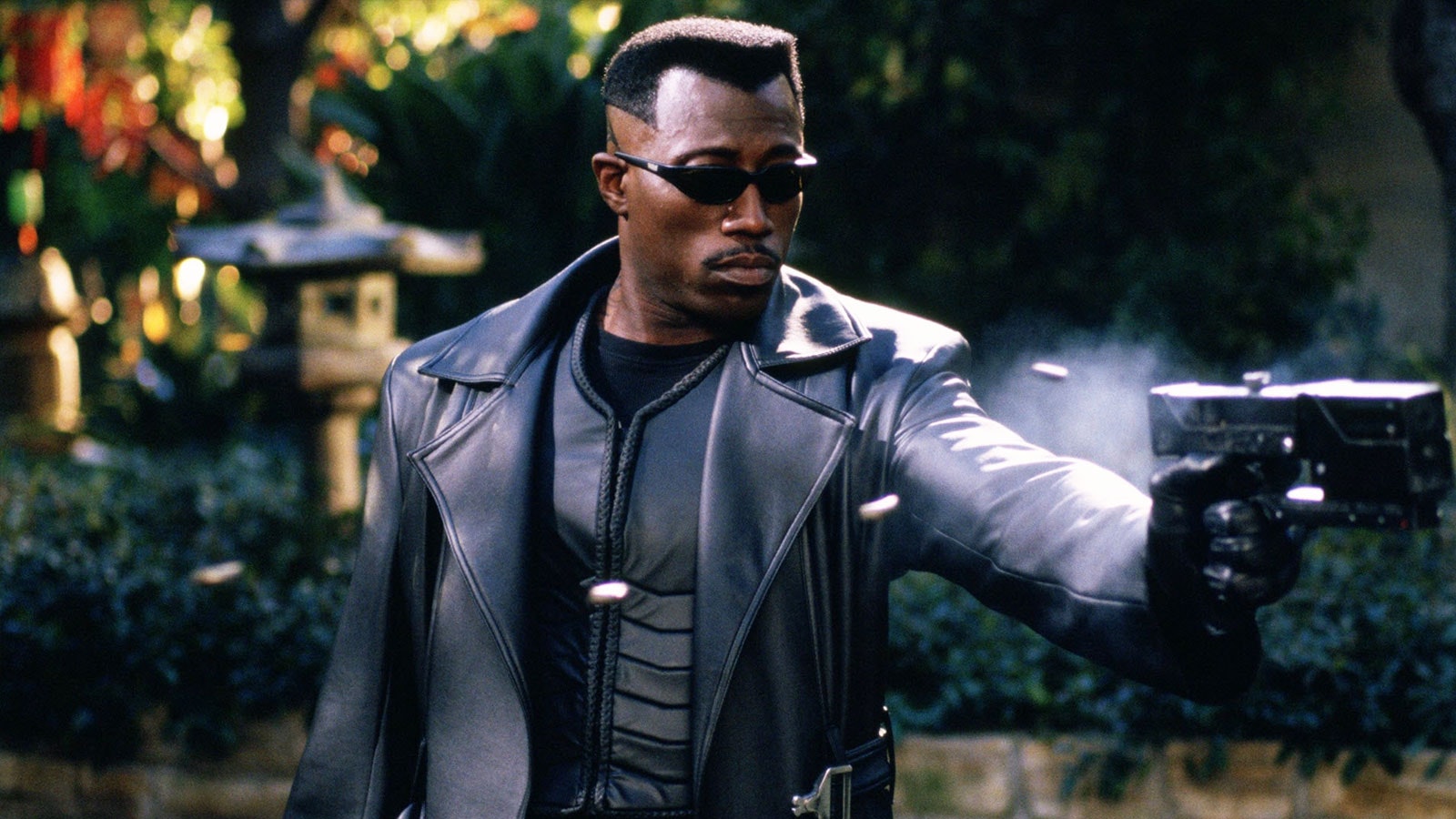
Read Empire's review of Blade.
Stephen Norrington came out of special effects departments, directed one straight-to-video knock-off and one cinematic masterpiece, and then crashed and burned with The League Of Extraordinary Gentlemen and was never heard from again. But thankfully, we’ll always have Blade. The first modern Marvel movie, predating even X-Men, it's a violent, techno-soundtracked collision of genres, gifting Wesley Snipes the role he was born to play: the always pissed-off half-vampire vigilante "daywalker". And the casting of Stephen Dorff as the villain was sort of genius, too. Blade is action-packed, pacey, unbelievably cool, surprisingly gnarly (think of the blood showers in the nightclub), and, in a detail that people sometime miss when they’re trying to sound clever, it knows it’s funny. Anyone who watched Snipes posing with his sword and thought the film was unintentionally amusing just didn’t get it at all. Guillermo del Toro’s Blade II is excellent too – stripping out the comic-book superhero elements like the car and the obvious costume and leaning more directly into the horror aspects. But the less said about David Goyer’s Blade Trinity, the better. The MCU beckons, but without Snipes, sadly (although Mahershala Ali should make for a great replacement — if the movie ever sees the light of day, that is.)
10. From Dusk Till Dawn (1996)
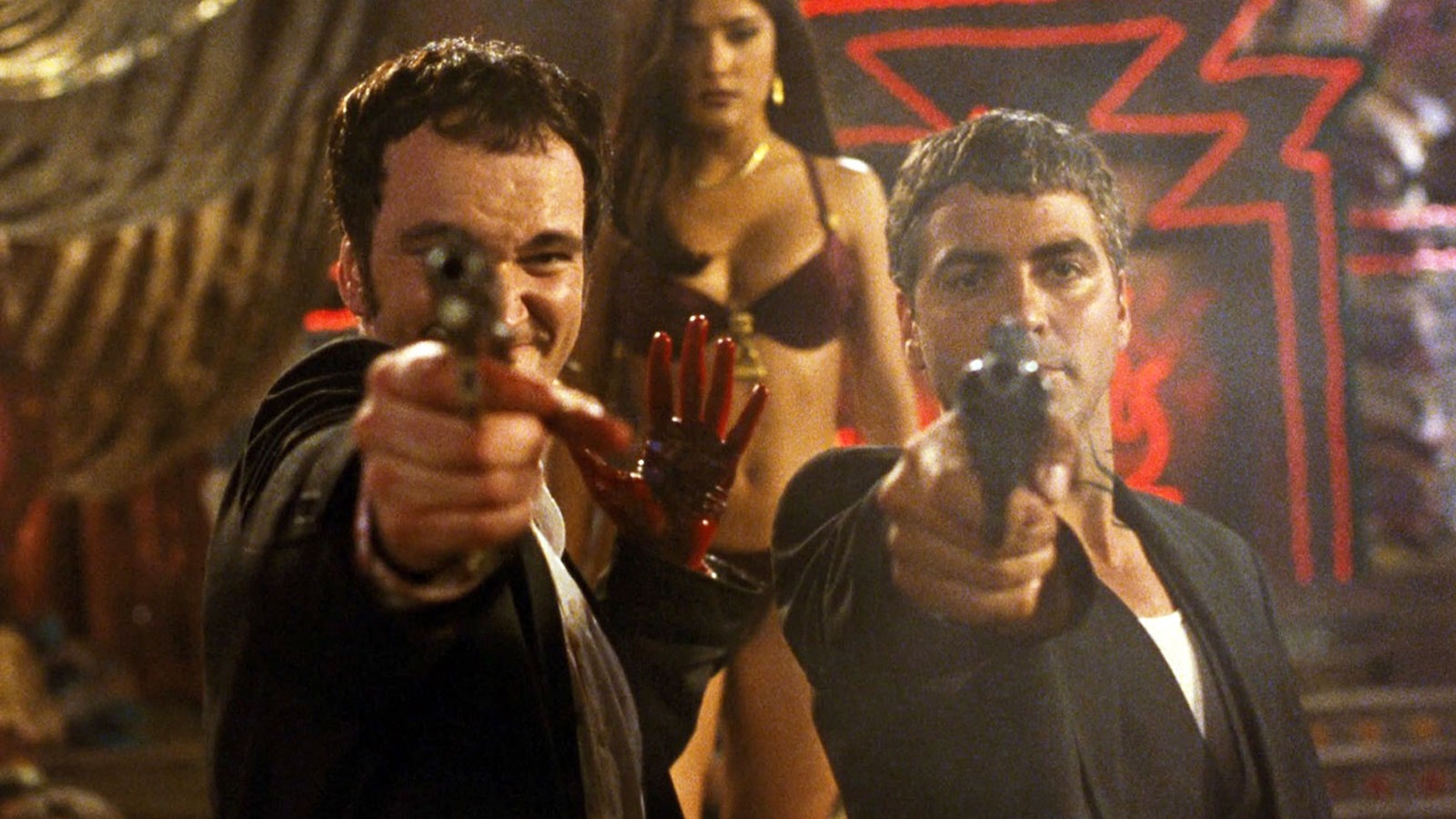
Read Empire's review of From Dusk Till Dawn.
A priest, his kids and two gangsters walk into a bar… It sounds like a joke – and it is! Perhaps one of the most uproarious vampire movies of them all, From Dusk Till Dawn is the joint progeny of Quentin Tarantino and Robert Rodriguez, and spins on the fantastic rug-pull of completely changing genre halfway through. To start with, it feels like Tarantino-by-numbers: Reservoir Dogs on the road. But once we reach the Titty Twister, all bets are off. George Clooney clearly has a blast playing against type as an amoral killer, Harvey Keitel also gets to mix it up as a man of peace who reluctantly becomes a man of undead war (and then an actual vampire), and Salma Hayek performs the sexiest snake-dance ever as the wonderfully named Santanica Pandemonium. There are sterling turns from Juliette Lewis, Fred Williamson, Cheech Marin, Danny Trejo, Michael Parks, John Saxon and Tom Savini too, and by the end it’s utter carnage. A couple of straight-to-video sequels and a TV series followed, but nothing could ever replicate the surprise of this film, or its balls-to-the-wall insanity.
9. What We Do In The Shadows (2014)
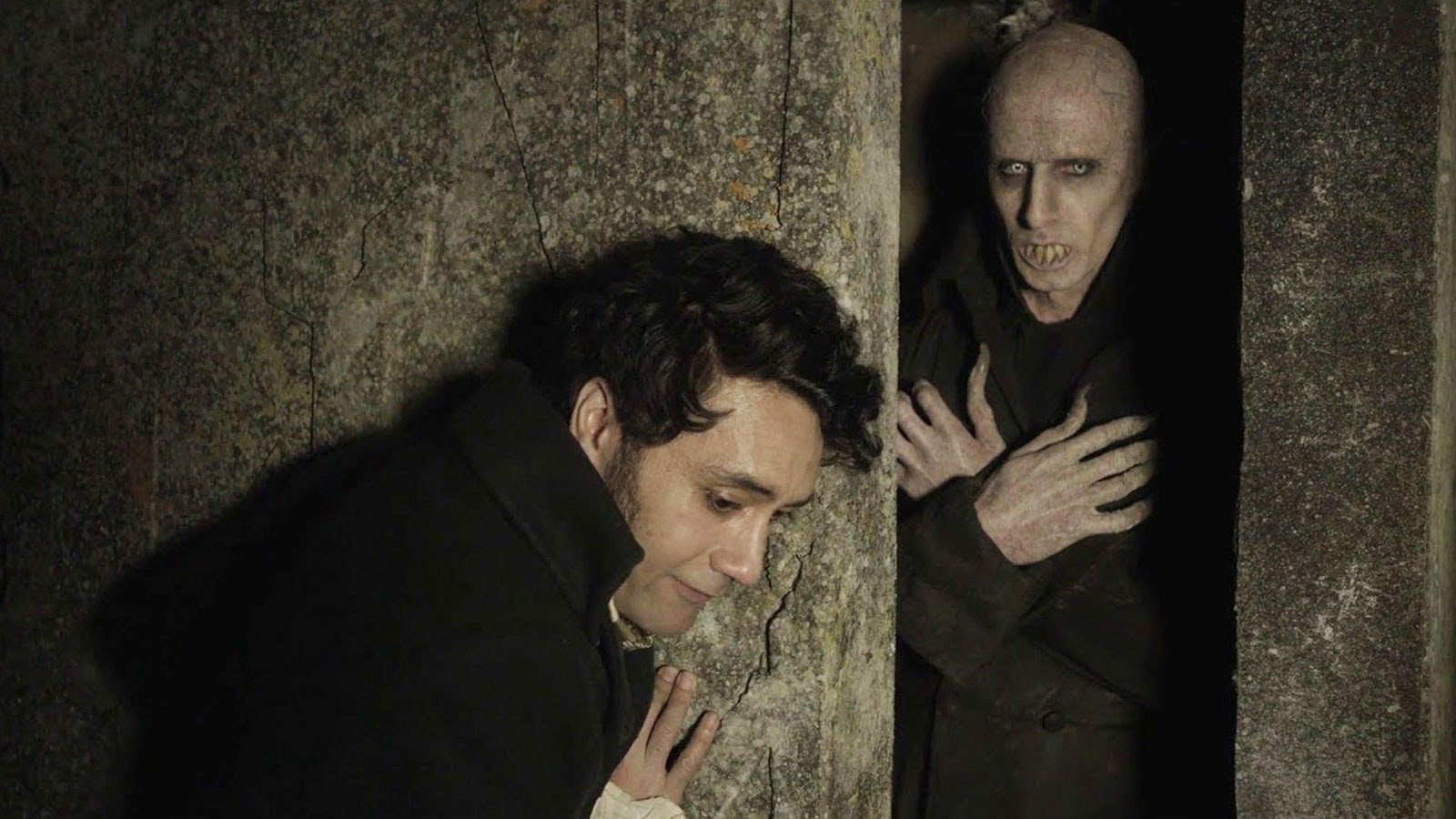
Read Empire's review of What We Do In The Shadows.
It’s weird that a low-key comedy juxtaposing complete mundanity with sometimes quite visceral horror would catapult anyone into the big time. But that’s how good Taika Waititi’s What We Do In The Shadows is: Spinal Tap for the 2010s; an endlessly quotable mockumentary swapping out the band of boneheads for a group of immortally hapless housemates in small-town Wellington. The bat fight, the crap black magic and the polite werewolves all make for excellent sketches within the loose framework, but story and set pieces are less important than just the characters and their petty squabbles. Waititi plays Viago, the 379-year-old dandy who hates a mess. Jonathan Brugh is Deacon, a 183-year-old wannabe Byron. Jemaine Clement is Vlad (you can infer the rest just from that name) and Ben Fransham is an 8,000-year-old wordless Nosferatu they keep in a cupboard. One of the best visual gags is accompanied by the line, “…and it was Petyr!” Very much from the Rob Reiner/Christopher Guest playbook, WWDITS is also uniquely its own thing. Although now, it’s perhaps not quite so unique after two spin-off TV series, which are also well worth your time.
8. Nosferatu (2024)
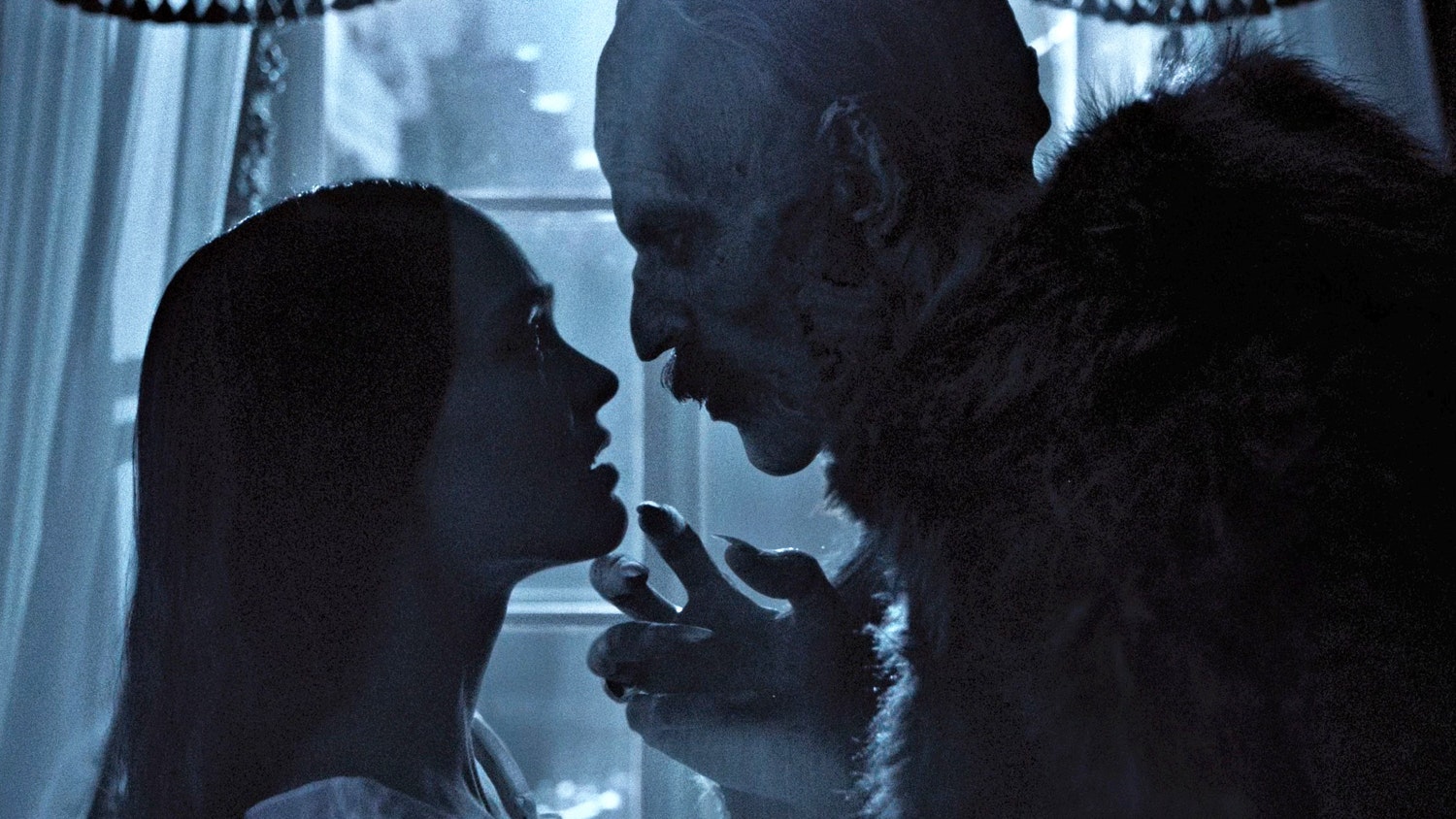
Read the Empire review of _Nosferatu _.
A passion project for years before it made its way to the screen, Robert Eggers’ take on the iconic vampire story is 100% Eggers, through and through. It leans into Romanian folklore, every single detail (including Count Orlok’s use of a reconstructed form of the ancient Dacian language) impeccably considered. It’s ornate, beautifully shot, but revels in the primal grubbiness of humanity at times. Doused in blue and black, its darkness is so heavy, you can’t help but succumb to it. Bill Skarsgård is unrecognisable as Orlok, a nightmarish moustachioed vision, unstoppable in his quest to possess what (or whom) he most desires – Ellen, depicted with full-throated commitment by Lily-Rose Depp. Exploring sexuality, obsession, perceived female hysteria and the power of belief, this is truly Gothic cinema at its very best.
7. Interview With The Vampire (1994)
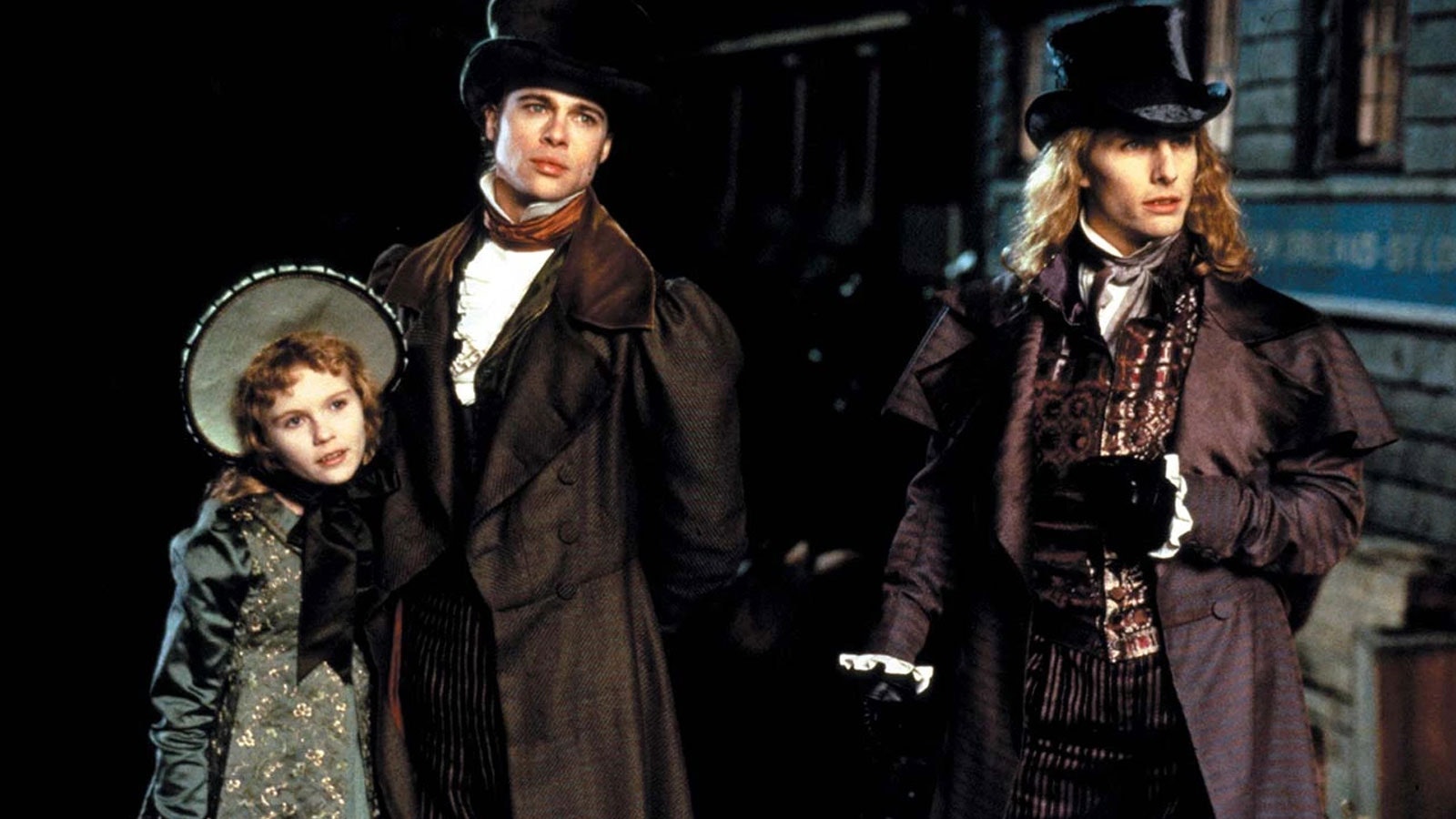
Read the Empire review of Interview With The Vampire.
Anne Rice’s novels are so cinematic that it’s curious she hasn’t been adapted more often, but Neil Jordan certainly set the bar of quality high in 1994. Interview With The Vampire, adapting the first of Rice’s Vampire Chronicles, is lush, sensuous, grown-up filmmaking, tapping the same vein as both Jordan’s 1984 masterpiece The Company Of Wolves, and the aforementioned Byzantium. Intriguingly, there are almost no ordinary humans in Interview, with the exception of Christian Slater’s journalist in the actual interview sequences. This is the night-to-night grind of the undead, more focused on petty internecine squabbles than it is on overblown gothic. The casting controversies at the time were a distraction: Brad Pitt as Louis and Tom Cruise as Lestat are both great in their roles; Cruise especially, playing against type for more or less the first time, leaning into some of the darker aspects of his movie-star persona that he’d later also exploit for Magnolia and Collateral. But it’s Kirsten Dunst who is the standout as Claudia, the ancient vampire stuck in a child’s body. In the novel, that character seemed unfilmable. Dunst, aged only 12, made her terrifyingly believable.
6. Dracula (1931)
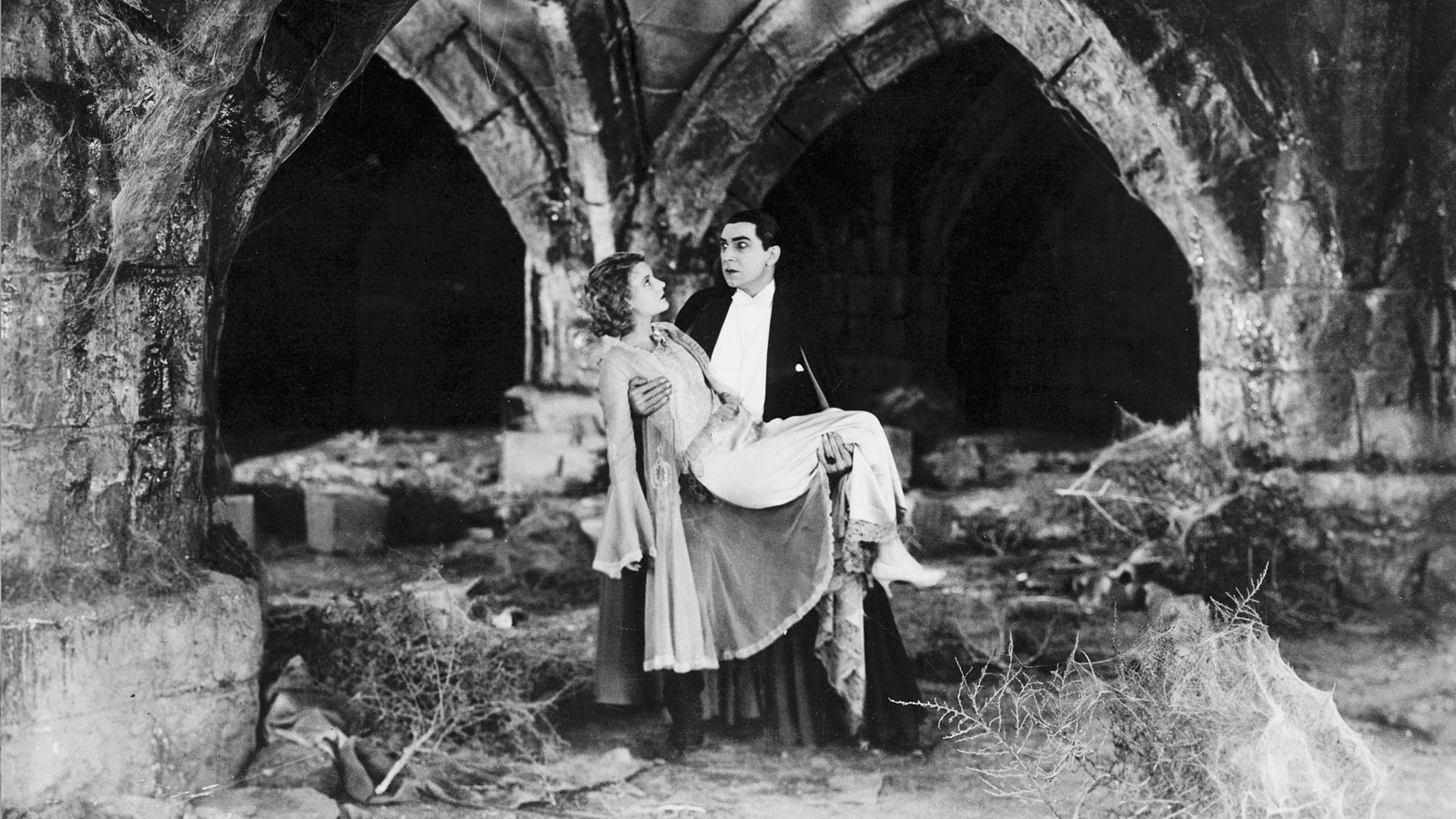
Read Empire's review of Dracula.
Creaky by today's standards, Tod Browning's Dracula remains seminal for its place in horror history, as well as for its eerie central performance by Bela Lugosi and the scene-stealing Dwight Frye. Made only a decade after Nosferatu, it’s a film that still has one foot in the silent era. Its stagey, the sparse dialogue is stilted, the actors’ mannerisms are exaggerated, and there’s almost no soundtrack (although the film is well worth watching with the score Philip Glass composed in 1999). But it all adds to the unique atmosphere. The film is strongest in its opening stretch, as Frye's Renfield visits the stunning, colossal set of Dracula's castle, meets the sombre count – dwarfed by his cobwebbed surroundings – and falls foul of the vampire's ethereal brides: a sequence of exquisite beauty. Subsequently it's a bit more plodding, and the ending is oddly rushed. But there are still unforgettable elements along the way.
5. Let The Right One In (2008)
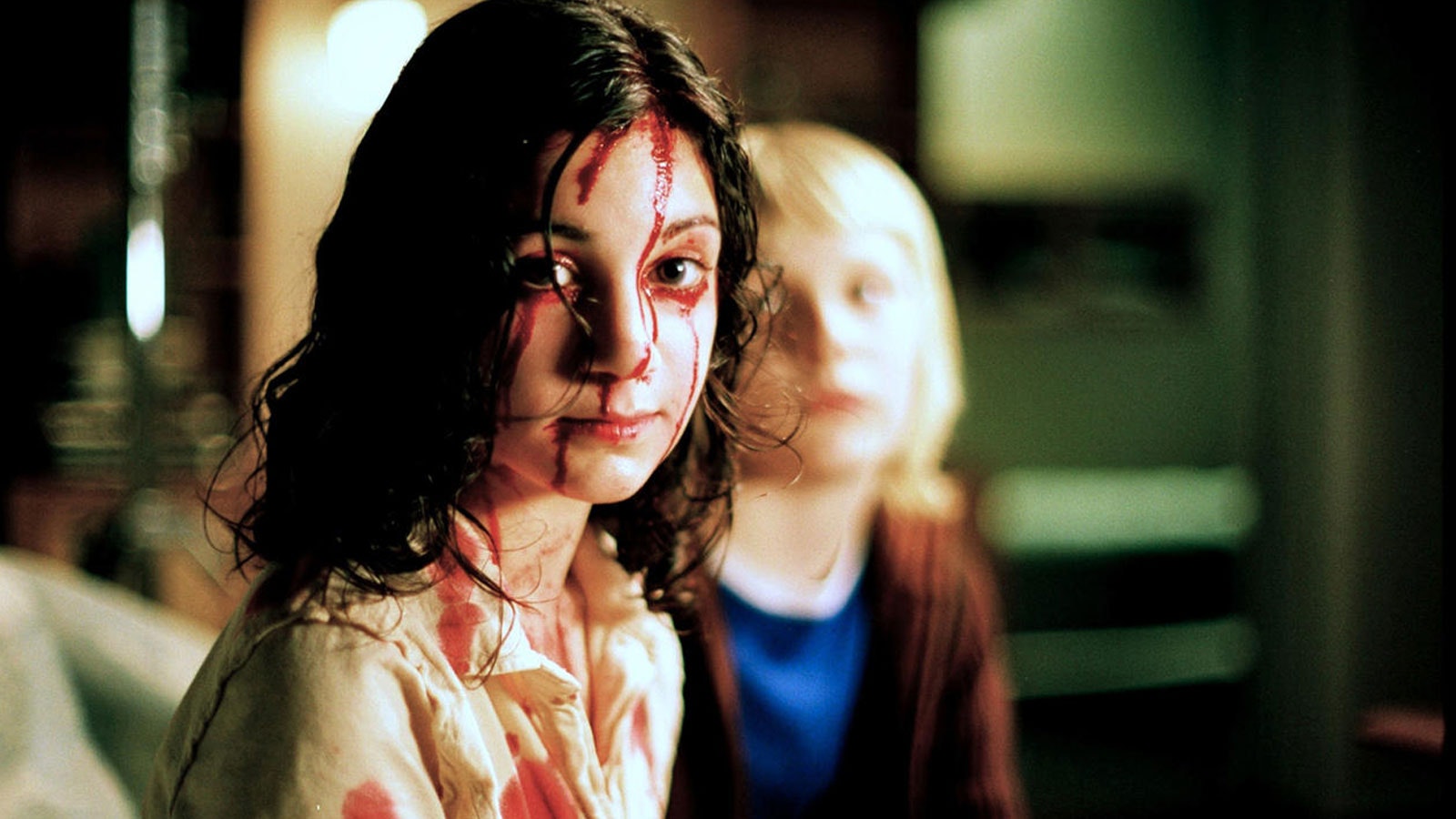
Read the Empire review of Let The Right One In.
Well before The Girl With The Dragon Tattoo and the explosion of Scandi-noir that followed, Let The Right One In demonstrated that the Swedes were already well ahead in the dark genre game. A breakout international sensation, Tomas Alfredson’s adaptation of John Ajvide Lindqvist’s novel is a tale of childhood innocence and experience, as bullied Stockholm schoolboy Oscar takes up with ambiguous vampire Eli, and discovers the lasting consequences. The film negotiates a fine balance between rather sweet childhood relationship story and something far more disturbing: Eli, after all, is far older than any normal kid. Thematically, it also takes in love and loneliness, class politics and ageing, but its off-kilter strangeness and moments of shocking violence keep its horror credentials to the fore. Matt Reeves’ American remake, Let Me In, is decent too, although it files off some of Swedish version’s rougher edges.
4. Near Dark (1987)
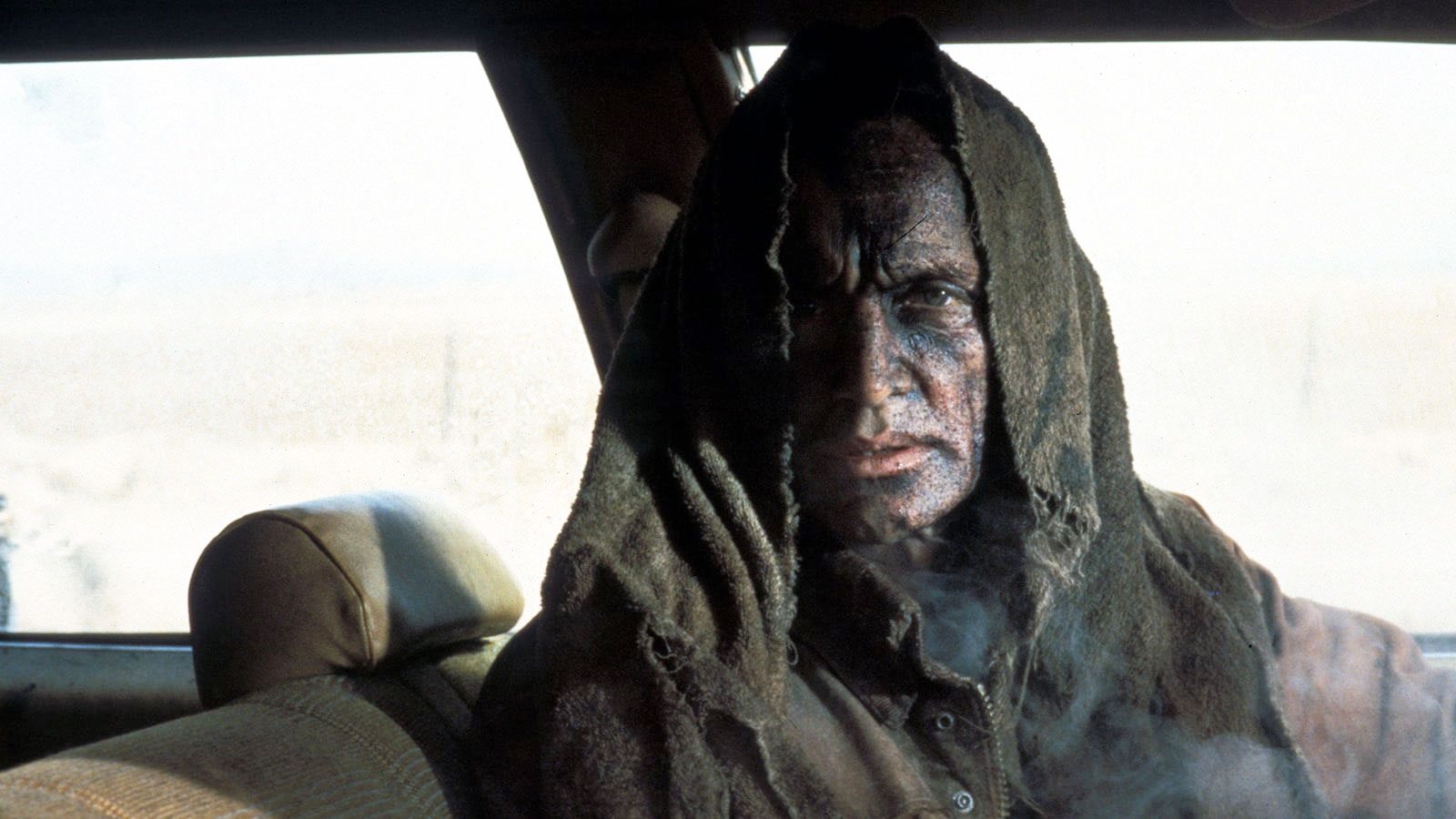
Read the Empire review of Near Dark.
A vampire romance from a time before that phrase became horrifying, Kathryn Bigelow’s _Near Dark_centres on star cross’d lovers Adrian Pasdar and Jenny Wright. The pair meet in seemingly unremarkable circumstances, but their impromptu tryst leaves Pasdar smoking as the sun rises and forced to go on the run through the Oklahoma landscape with Wright’s vampire clan: the Aliens rep company of Bill Paxton, Jenette Goldstein and Lance Henriksen. Everyone’s great – but as ever, it’s Lance Henriksen that draws the eye as Jesse, the craggy patriarch who, in case you hadn’t noticed that this is a Western, is old enough to be an American Civil War veteran (“I fought for the South; we lost”). Action-packed, scary, beautifully shot and genuinely romantic, it’s one of the absolute nailed-on classics of the vampire genre, and it arrived within months of The Lost Boys in 1987. What a year.
3. The Lost Boys (1987)
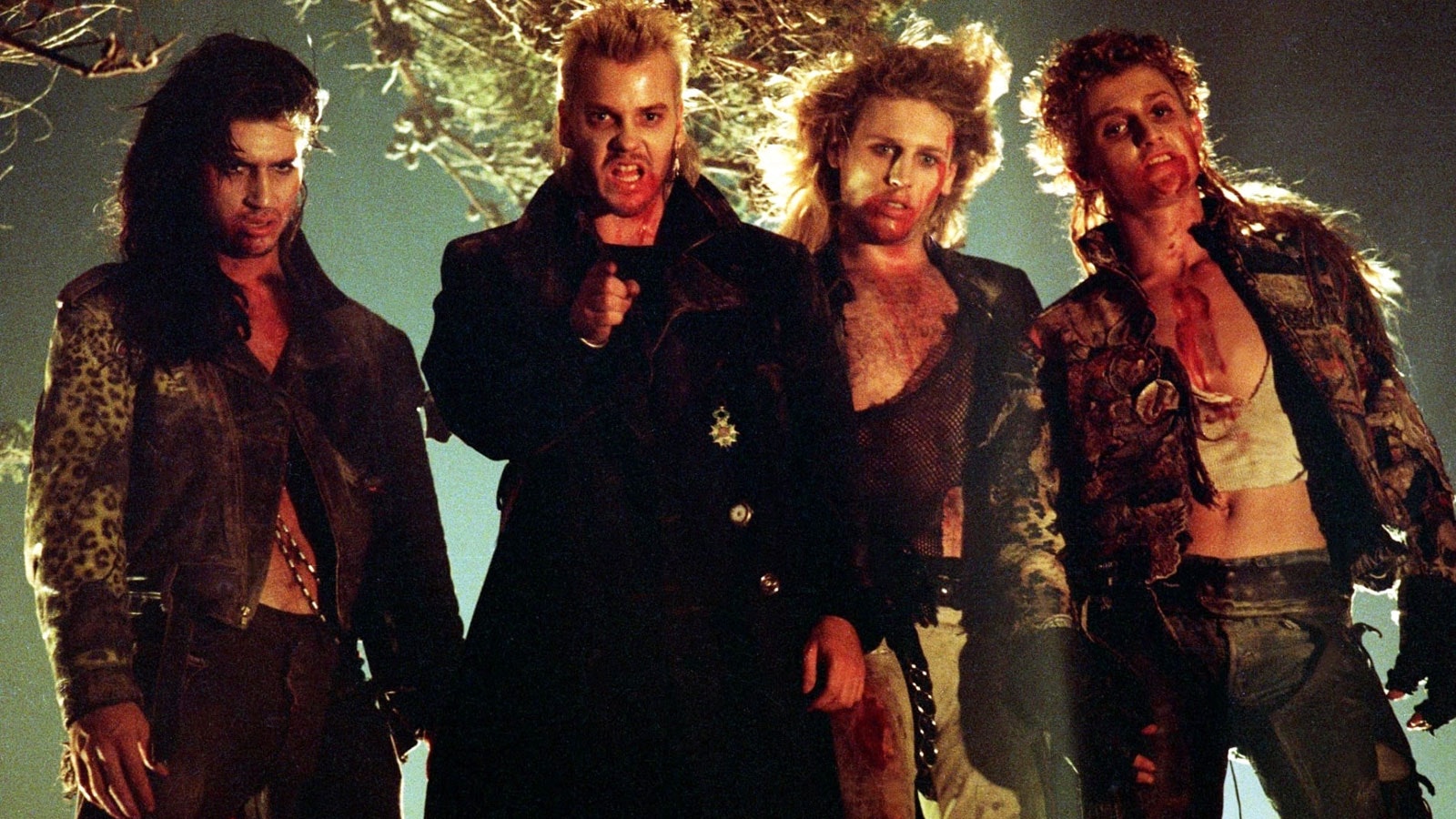
Read Empire's review of The Lost Boys.
35 years old and a cultural touchstone for the generations that have grown up with it, Joel Schumacher’s best film is a multi-genre piece that transcends all of its potential limitations. It’s a teen movie, but doesn’t skimp on violence and viscera. It’s a horror film, but it’s genuinely funny. It’s a comedy, but it’s properly scary. You can pick your chosen pack too. Maybe you loved Cory Haim and the Frog Brothers (Corey Feldman and Jamison Newlander), or maybe you’d have secretly preferred to hang out with Kiefer Sutherland, Alex Winter and the rest of their edgier, older clan (Kiefer’s the nominal bad guy, but so damned charismatic he still looks boss with a peroxide mullet). Unlike Fright Night, released the same year, it uses the tropes of the established vampire genre without being backwards-looking or nostalgic, and while it’s definitely a time capsule, it hasn’t dated as badly as it could have. The Lost Boys has never needed to be reclaimed as a neglected classic, because it never went away.
2. Dracula (1958)
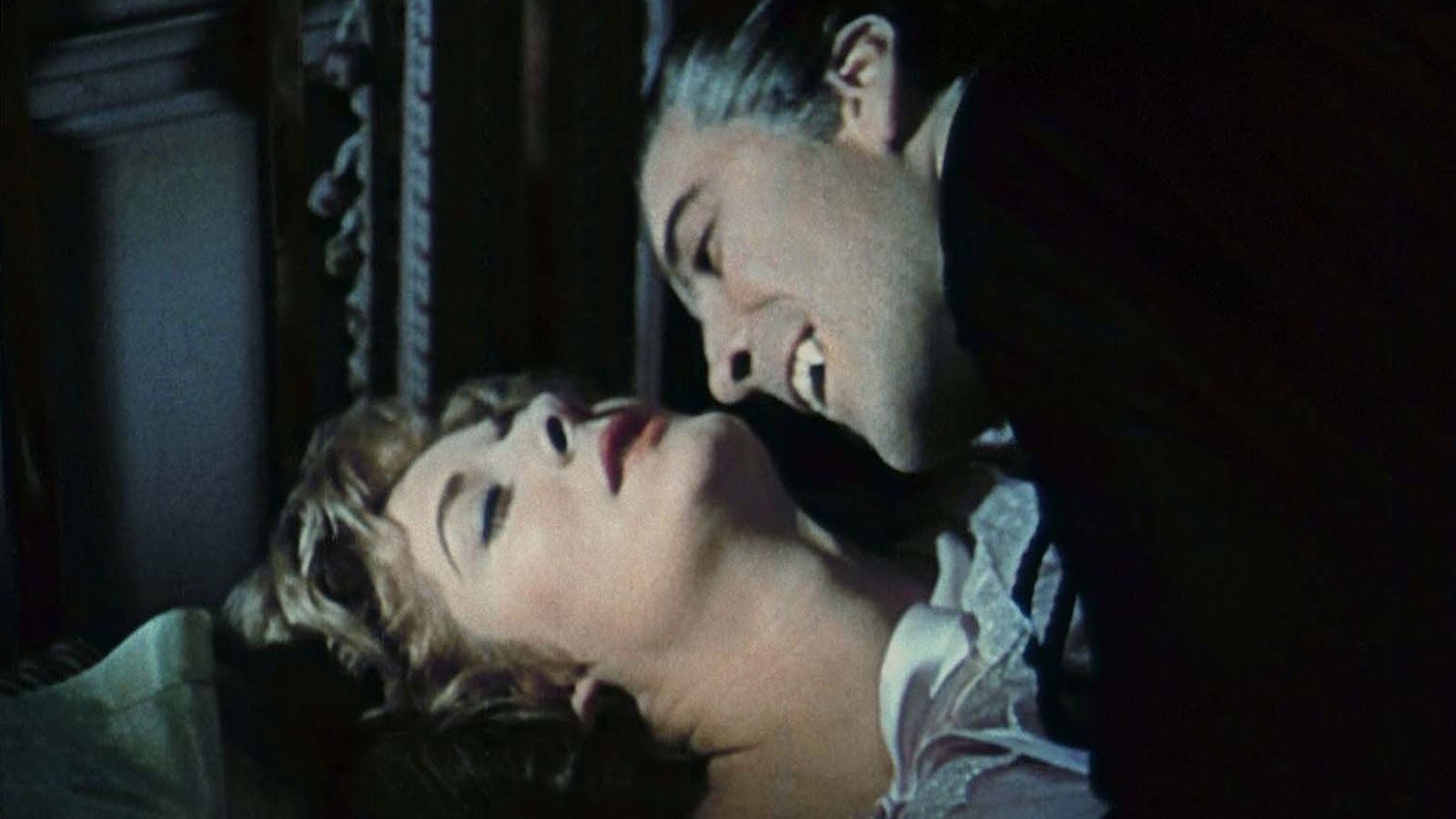
Read Empire's review of Dracula.
Quatermass and Frankenstein preceded it, but to a great extent, Hammer Horror begins here. Directed by the incomparable Terence Fisher, written by Jimmy Sangster, pairing Peter Cushing and Christopher Lee (with Lee getting actual lines for the first time), and going all-out with colour, glamour, sex and blood, Hammer’s Dracula aligns the elements and distils the formula that powered the studio for the next two decades. Sangster’s bold screenplay at once eviscerates Bram Stoker’s novel and sets the narrative free. With the locations transposed and limited to Romania and half the dramatis personae excised, we’re left with a lean adventure, kicked off by the conceit that Jonathan Harker in this version is a spy for Cushing’s swashbuckling Van Helsing (no real estate dealing here: Harker poses as Dracula’s new librarian). Lee, of course, gets to be urbane and darkly seductive, but there’s also genuine savagery to the moments when he gets to bare his teeth. There would be further great Hammer vampire movies – Kiss Of The Vampire, Brides Of Dracula, Twins Of Evil – but Dracula is where the studio that dripped blood really found its gothic groove.
1. Nosferatu (1922)
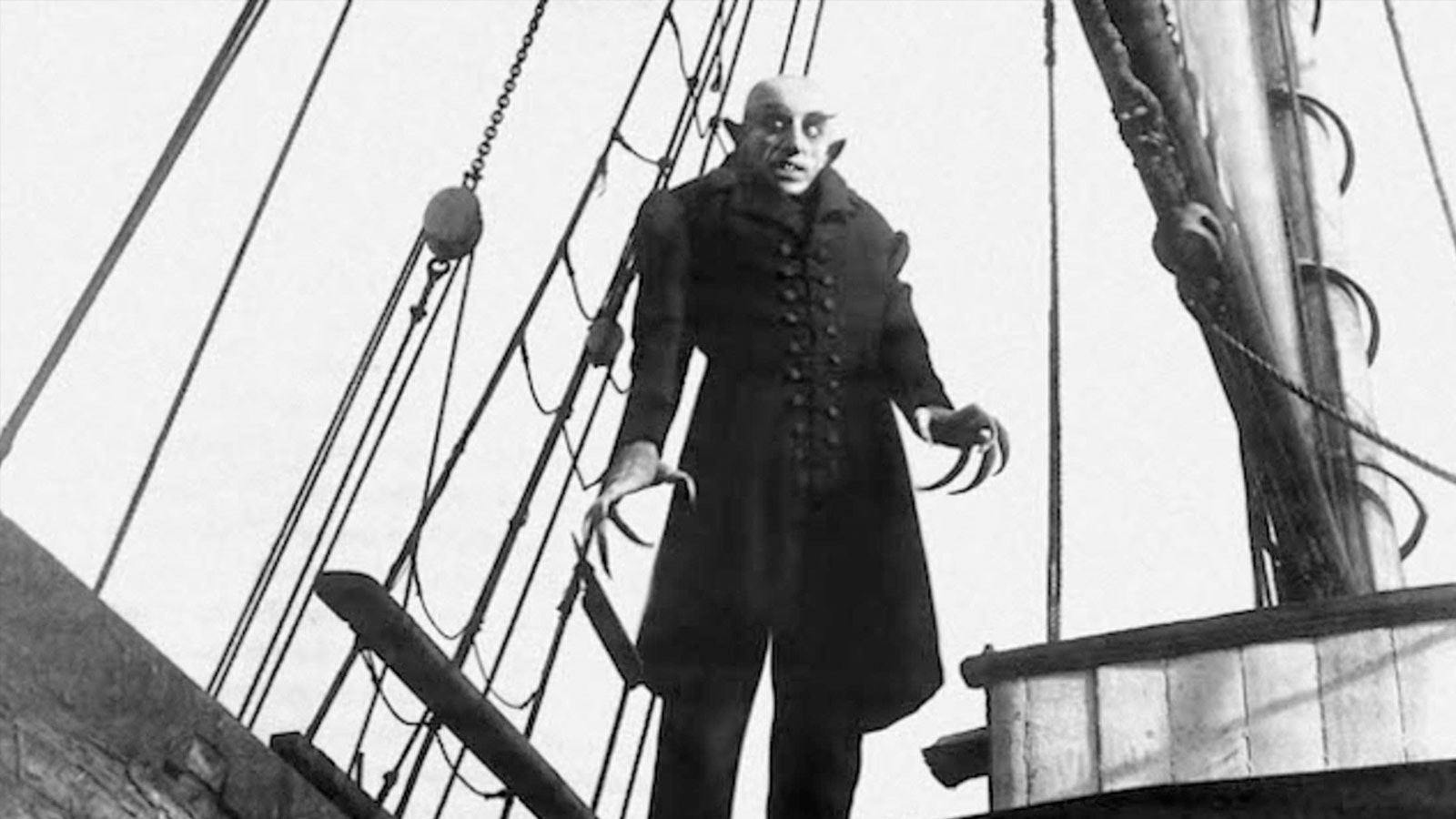
Read Empire's review of Nosferatu.
Denied the rights to Bram Stoker’s novel, F.W. Murnau turned Dracula into Count Orlok. Played by theatre actor Max Schreck (which seems to have been his real name, even though it means "fright" in German) in astonishing make-up, the character conveys an almost indescribable malevolence. Famous subsequent Draculas like Bela Lugosi and Christopher Lee would put their own alluring spin on the character, but here he’s just a filthy, corrosive evil, creeping through Murnau’s expressionist shadows. Nosferatu’s German subtitle is "a symphony of horror": an odd claim for a silent film, but somehow you can’t argue with it. Bootleg Dracula it may be, but it remains a touchstone for every subsequent adaptation, and it’s still this film that Oxford World’s Classics use for their paperback Dracula cover. Werner Herzog’s 1979 remake, starring Klaus Kinski as the 'vampyre', is also well worth a watch, as is the playful Shadow Of The Vampire (2000), which casts Willem Dafoe as Schreck and suggests he was a vampire for real.
What's Your Reaction?























